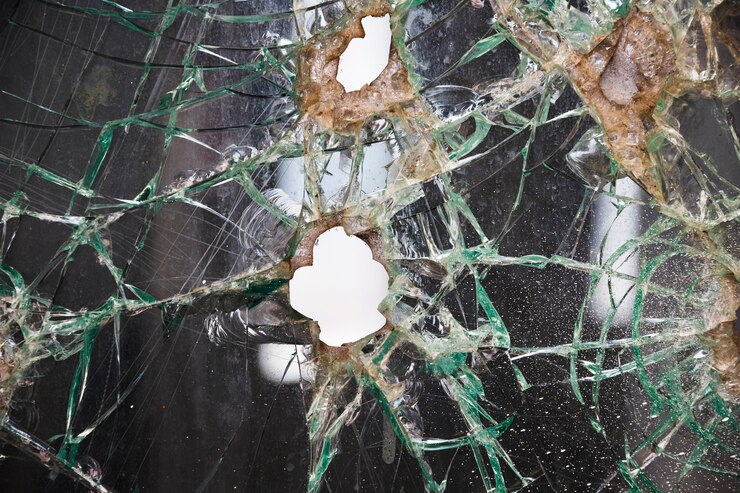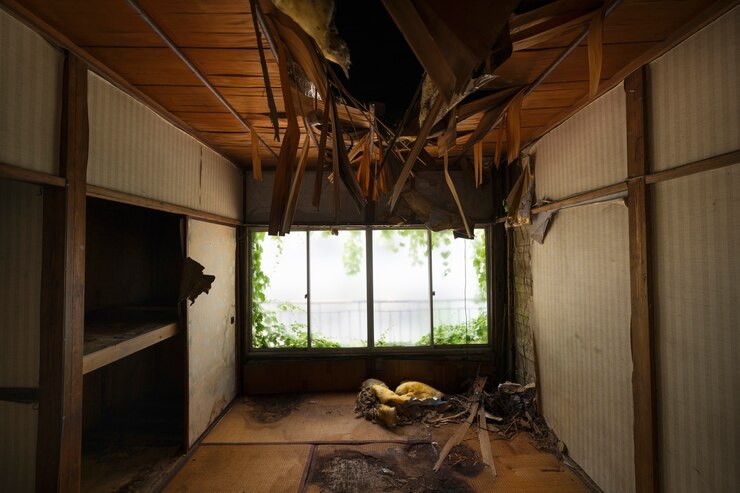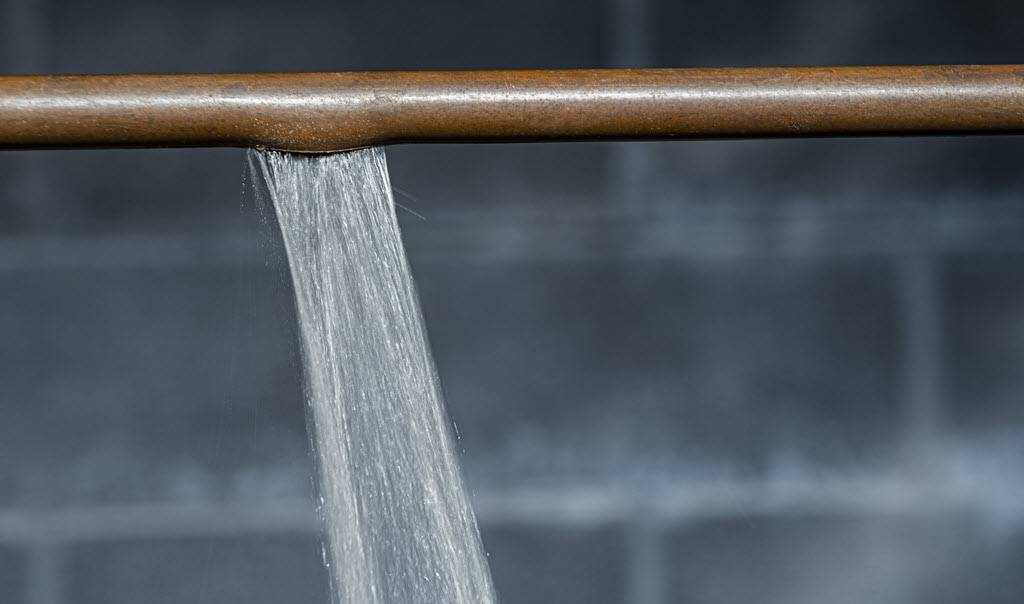insurance cover ceiling collapse incidents. In the event of a ceiling collapse, home insurance policies typically provide coverage for repairs or replacement of the damaged ceiling, as well as any belongings affected by the collapse.
However, coverage details may vary depending on the specific policy, cause of the collapse, and the extent of the damage. It is essential to review your policy carefully and consult with your insurance provider to understand the specific coverage and any exclusions that may apply.
By being aware of the coverage offered by your home insurance, you can ensure that you are adequately protected in the event of a ceiling collapse.
Understanding What Home Insurance Covers For Ceiling Collapse
Home insurance is a crucial safety net for homeowners, protecting them from unexpected events that may damage their property. One such event is ceiling collapse, which can be caused by various factors such as water damage, structural issues, or natural disasters. Understanding what your home insurance covers for ceiling collapse is essential in ensuring that you have the right coverage to protect your home and finances.
Types Of Damage Covered By Home Insurance Policies
When it comes to ceiling collapse, it’s important to know what types of damage your home insurance policy will cover. Generally, home insurance provides coverage for sudden and accidental damage to your property. This includes events such as:
- Water damage from burst pipes or plumbing issues
- Structural damage caused by a severe storm or earthquake
- Damage resulting from a fire or explosion
- Weight of ice or snow causing a collapse
Exploring The Potential Coverage For Ceiling Collapse
While home insurance policies typically cover these types of damage, it’s important to review your specific policy to determine if ceiling collapse is included. Some policies may offer coverage for both the restoration of the ceiling and any damaged belongings, while others may only cover the structural repairs.
If your ceiling collapse is a result of a covered peril, such as a burst pipe or a fire, it is more likely to be covered by your home insurance policy. However, if the collapse is due to poor maintenance or wear and tear, it may not be covered. Different insurance providers have varying policies, so it’s crucial to carefully review your policy documents or speak with your insurance agent to fully understand what is covered.
Factors That Determine If Ceiling Collapse Is Covered
Several factors come into play when determining whether ceiling collapse is covered by your home insurance. These factors can include:
- The cause of the collapse: If the collapse is caused by a covered peril, it is more likely to be covered.
- The age and condition of the property: Some insurance policies exclude coverage for damage caused by aging or lack of maintenance.
- Your policy exclusions and endorsements: Review your policy documents to understand any specific exclusions or endorsements related to ceiling collapse.
- The deductible and coverage limits: Your deductible and coverage limits will affect the amount of reimbursement you receive for ceiling collapse.
By considering these factors, you can ensure that you have the appropriate coverage in place to protect your home in the event of a ceiling collapse. It’s always recommended to regularly review your policy and consult with your insurance provider to address any concerns and ensure you have adequate protection.

Does Home Insurance Cover Ceiling Collapse Caused By Water Damage?
One of the nightmares that every homeowner dreads is a ceiling collapse, which can occur due to various reasons. Among them, water damage is a common cause that can lead to significant structural damage and costly repairs. If you have home insurance, you might be wondering if it covers ceiling collapse caused by water damage. In this article, we will delve into this question and provide you with the necessary insights.
Examining The Impact Of Water Damage On Ceiling Collapse
Water damage is a silent threat that can gradually weaken the structural integrity of your home. When water infiltrates your ceiling due to leaks from burst pipes, plumbing issues, or roof problems, it gradually deteriorates the materials, making the ceiling susceptible to collapse. Over time, the accumulated water weakens the ceiling’s infrastructure, ultimately resulting in a potential hazard that requires immediate attention.
Assessing The Coverage For Water-related Ceiling Collapse
Whether or not your home insurance covers ceiling collapse caused by water damage depends on the specific policy you hold. Generally, standard homeowners’ insurance policies provide coverage for water damage caused by sudden and accidental incidents, such as burst pipes or a malfunctioning washing machine. However, routine maintenance issues or gradual wear and tear are usually excluded from coverage. Therefore, if the water damage leading to ceiling collapse can be attributed to a covered peril, your insurance might cover the damages.
To determine the extent of coverage for water-related ceiling collapse, the insurance company will typically investigate the cause of the water damage. It is crucial to report the incident promptly and provide all necessary documentation to support your claim. The claims adjuster will assess the situation and, if the claim is approved, provide you with the necessary funds for repairs or restoration.
Understanding The Limitations And Exclusions For Water Damage
Although your home insurance may cover water-related ceiling collapse caused by sudden incidents, certain limitations and exclusions must be taken into account. For instance, damage resulting from flooding or sewer backup may require additional coverage, as they are not typically included in standard policies. It is essential to review your policy carefully and consider any additional coverage options that may be necessary to protect your home adequately.
Moreover, any neglect or failure to properly maintain your plumbing system or roof may invalidate your insurance coverage. Regular inspections, prompt repairs of leaks, and taking necessary precautions to prevent water damage are essential steps in maintaining your coverage and preventing ceiling collapse.
In conclusion, while home insurance may cover ceiling collapse caused by water damage, it is crucial to understand the terms and limitations of your specific policy. Regular maintenance and prompt action in response to water damage incidents can help protect your home and ensure that you receive the coverage you deserve in the event of a ceiling collapse caused by water damage.
Coverage For Ceiling Collapse Due To Structural Issues
Exploring The Relationship Between Structural Issues And Ceiling Collapse
Understanding the relationship between structural issues and ceiling collapse is crucial when it comes to homeowners insurance coverage. Structural issues can range from weakened supports, compromised foundations, inadequate construction materials, and other underlying problems that can put your home at risk. When these issues go unaddressed, the stability of your home’s structure can be compromised, leading to potential ceiling collapse.
It is important to note that ceiling collapse caused by structural issues doesn’t occur overnight. It is often the result of years of wear and tear and neglect. As a homeowner, it is essential to regularly inspect your property to identify and address any potential structural issues before they escalate into more significant problems.
Investigating The Coverage Provided For Structural-related Ceiling Collapse
When it comes to homeowner’s insurance, coverage for ceiling collapse caused by structural issues can vary. Policies typically cover sudden and accidental events, such as storms or accidents, that result in ceiling collapse. However, coverage for structural-related ceiling collapse may differ depending on your insurer and the specific terms of your policy.
To determine if your home insurance policy covers ceiling collapse caused by structural issues, it is vital to review your policy documents carefully. You may want to pay particular attention to the section on “Perils Insured Against” or “Coverage Exclusions” to fully understand the extent of your coverage. Some policies may explicitly include coverage for structural-related ceiling collapse, while others may exclude it.
When assessing your coverage, keep in mind that insurance companies typically differentiate between wear and tear and sudden events. Coverage for regular wear and tear issues that result in ceiling collapse may be limited or excluded from your policy. However, if the collapse is caused by a sudden and accidental event, such as a burst pipe or severe storm, your policy may provide coverage for the resulting structural damage and ceiling collapse.
Limitations And Exclusions For Ceiling Collapse Caused By Structural Issues
As with any insurance policy, there are limitations and exclusions to be aware of when it comes to coverage for ceiling collapse caused by structural issues. These limitations may include factors such as the age of your home, pre-existing conditions, or lack of proper maintenance.
Insurance companies conduct thorough investigations into the cause of ceiling collapse to determine if it resulted from negligence, lack of maintenance, or pre-existing structural issues. If any of these factors are evident, your claim for coverage may be denied or limited.
| Factor | Implications |
|---|---|
| Age of Home | Older homes may have wear and tear issues that are not covered by insurance. |
| Pre-existing Conditions | If your home had structural issues before obtaining insurance, coverage may be limited or denied. |
| Failure to Properly Maintain | Lack of regular maintenance, such as addressing leaks or other structural concerns, can result in denied claims. |
It is essential to stay proactive in maintaining your home’s structural integrity, which includes addressing any potential issues promptly. By keeping your home in good condition and regularly checking for signs of structural problems, you can potentially avoid ceiling collapse and ensure that your insurance coverage remains intact.
Ceiling Collapse Resulting From External Factors: Is It Covered?
Analyzing Potential External Factors That May Lead To Ceiling Collapse
Before delving into the coverage provided by home insurance for ceiling collapse resulting from external factors, it is essential to analyze the potential causes of such incidents. While external elements are often overlooked when it comes to ceiling collapse, they can play a significant role in compromising the structural integrity of a building.
Here are some common external factors that may contribute to ceiling collapse:
- Severe weather conditions, including heavy rain, snowstorms, or extreme temperatures
- Natural disasters such as earthquakes, hurricanes, or tornadoes
- Structural damage caused by nearby construction or excavation work
- Tree limbs or falling debris from neighboring properties
- Improper maintenance and neglect of the building’s exterior
These external factors can weaken the ceiling’s support structure, leading to potential collapse. Identifying and understanding these risks is crucial for homeowners seeking adequate insurance coverage.
Evaluating The Coverage Provided For Ceiling Collapse Caused By External Factors
When it comes to home insurance coverage for ceiling collapse, policies typically offer protection against damages caused by external factors. However, the extent of coverage can vary depending on the policy and the specific circumstances of the incident.
Most standard homeowners’ insurance policies cover ceiling collapse caused by external factors, under the dwelling coverage section. This means that if a severe storm damages your roof, leading to a ceiling collapse, your insurance policy should help cover the repair or replacement costs of the affected areas.
It is crucial to review your policy’s terms and conditions to understand the coverage provided specifically for external-related ceiling collapse. Insurance companies may specify certain conditions that need to be met for a claim to be valid, such as evidence of regular property maintenance or adherence to building codes.
Understanding The Limitations And Exclusions For External-related Ceiling Collapse
While home insurance policies generally offer coverage for external-related ceiling collapse, it is important to be aware of the limitations and exclusions that may apply.
Common limitations and exclusions related to external factors causing ceiling collapse include:
- Gradual damage or wear and tear caused by neglecting regular maintenance
- Specific exclusions for certain natural disasters, such as floods or earthquakes
- Policy limits that may affect the maximum amount of coverage available
- Exclusions for damage caused by acts of war or terrorism
It is recommended to thoroughly review your policy and consult with your insurance provider to fully understand the coverage provided and any potential limitations or exclusions regarding ceiling collapse caused by external factors. By doing so, you’ll ensure that you are adequately protected and prepared in the event of such an incident.
Steps To Take When Filing A Home Insurance Claim For Ceiling Collapse
If you’ve experienced a ceiling collapse in your home, it can be a stressful and potentially dangerous situation. The good news is that most standard home insurance policies cover damage caused by a ceiling collapse. However, navigating the claims process can be overwhelming if you’re not prepared. In this guide, we’ll walk you through the steps you should take when filing a home insurance claim for ceiling collapse, ensuring you have the best chance of receiving the compensation you deserve.
Preparing To File A Claim For Ceiling Collapse
Before you start the claims process, it’s important to gather all the necessary information and documentation to support your claim. Here’s what you need to do:
- Review your insurance policy: Take the time to carefully read through your home insurance policy. Familiarize yourself with the coverage limits, deductibles, and any specific requirements for filing a claim.
- Take photos of the damage: Document the ceiling collapse by taking clear and detailed photographs. Make sure to capture multiple angles and close-ups of the affected areas. These photos will serve as valuable evidence when filing your claim.
- Secure the scene: If it’s safe to do so, try to mitigate further damage by covering the affected area with a tarp or plastic sheeting. This shows that you’ve taken necessary steps to prevent any more harm to your property.
- Keep records of repairs and expenses: If you need to make temporary repairs to ensure your safety or prevent further damage, keep detailed records of the work done and any expenses incurred. This information will be useful when filing your claim.
Documenting The Damage And Gathering Evidence
To successfully file a claim for a ceiling collapse, you’ll need to provide sufficient evidence to your insurance company. Here are the steps to follow:
- Contact your insurance company: Once you’ve gathered all the necessary information, reach out to your insurance company to notify them about the ceiling collapse. They will guide you through the claims process and provide you with any additional instructions.
- Provide a detailed description: When speaking to your insurance company, provide a clear and concise description of the ceiling collapse and the resulting damage. Include the date and time it occurred, as well as any relevant details regarding the cause of the collapse.
- Submit your claim in writing: Follow up your phone call with a written claim submission. Include all the documentation you’ve gathered, such as photos, repair records, and receipts. This written claim serves as a formal request for coverage and creates a paper trail of your communication.
- Cooperate with the insurance adjuster: Once your claim is submitted, the insurance company will assign an adjuster to assess the damage. Cooperate fully with the adjuster and provide any additional information or evidence they request. Their investigation will help determine the extent of the coverage you’re entitled to receive.
Navigating The Claims Process For Ceiling Collapse
As you navigate the claims process for a ceiling collapse, it’s important to stay organized and keep track of all communication with your insurance company. Here are some tips to help you:
- Keep a detailed record: Maintain a record of all phone calls, emails, and letters exchanged with your insurance company. Include the dates, times, and names of the individuals you spoke with. This record will help you stay informed and ensure that all necessary steps are taken throughout the process.
- Follow up promptly: Respond to any requests from your insurance company promptly and provide them with any additional information or documentation they require. Timely communication will help expedite the claims process.
- Review the settlement offer: Once the insurance company has completed its investigation, they will provide you with a settlement offer. Carefully review this offer to ensure it aligns with your policy coverage and accurately compensates you for the damage you’ve experienced.
- Seek professional help if needed: If you encounter challenges or disputes during the claims process, consider seeking assistance from a professional, such as a public adjuster or an attorney specializing in insurance claims. They can provide guidance and advocate for your rights as a policyholder.
By following these steps and staying organized throughout the claims process, you can increase your chances of receiving a fair settlement for the ceiling collapse damage. Remember, it’s essential to act promptly and gather all the necessary evidence to support your claim.
Frequently Asked Questions Of Does Home Insurance Cover Ceiling Collapse
Can You Make A Claim On Your Homeowners Insurance If Your Ceiling Starts To Collapse?
Yes, you can make a claim on your homeowners insurance if your ceiling starts to collapse.
Does House Insurance Cover Ceiling?
House insurance typically covers the ceiling in case of damage from a covered peril, such as a fire or burst pipe. It’s important to review your policy to understand the specific coverage and any exclusions.
What Happens If Your Ceiling Collapses?
Ceiling collapse can be dangerous and cause injuries or property damage. Seek immediate professional help to assess the situation, ensure safety, and repair the ceiling. Avoid entering the affected area and remove valuable items to prevent further damage.
What To Do If Part Of The Ceiling Collapses?
If part of the ceiling collapses, ensure your safety by moving to a safe area away from the debris. If anyone is injured, call for emergency medical assistance immediately. Contact a professional contractor for inspections and repairs to address the structural damage as soon as possible.
Conclusion
To summarize, home insurance coverage for ceiling collapse depends on the policy you have and the cause of the collapse. It is essential to review your specific policy and understand the coverage details. Whether it’s due to water damage, structural issues, or unforeseen events, consulting your insurance provider and filing a claim promptly is crucial.
Remember, prevention and regular maintenance can help reduce the risk of ceiling collapse and potential financial setbacks for homeowners.




